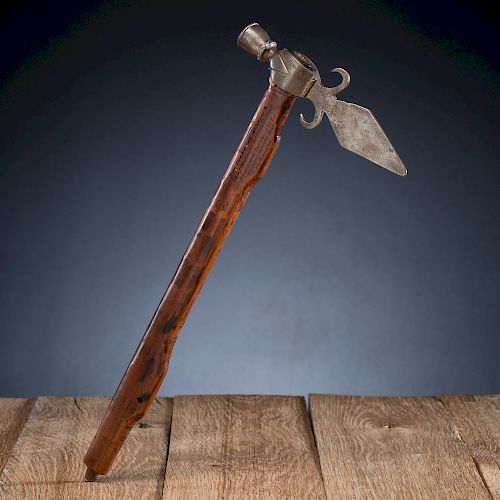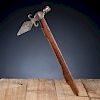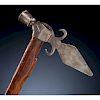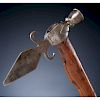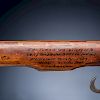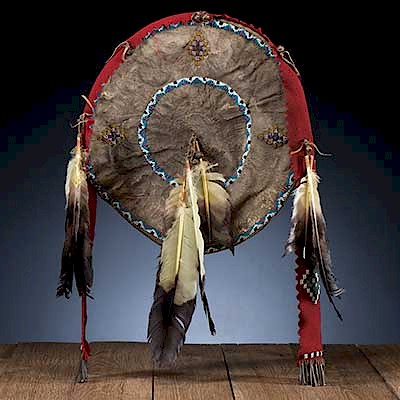Spontoon Pipe Tomahawk, Attributed to Seneca Chief Cornplanter
About Seller
6270 Este Ave.
Cincinnati , OH 45232
United States
With offices in Cincinnati, Cleveland and Denver, Cowan’s holds over 40 auctions each year, with annual sales exceeding $16M. We reach buyers around the globe, and take pride in our reputation for integrity, customer service and great results. A full-service house, Cowan’s Auctions specializes in Am...Read more
Two ways to bid:
- Leave a max absentee bid and the platform will bid on your behalf up to your maximum bid during the live auction.
- Bid live during the auction and your bids will be submitted real-time to the auctioneer.
Bid Increments
| Price | Bid Increment |
|---|---|
| $0 | $25 |
| $500 | $50 |
| $1,000 | $100 |
| $2,000 | $250 |
| $5,000 | $500 |
| $10,000 | $1,000 |
| $20,000 | $2,500 |
| $50,000 | $5,000 |
| $100,000 | $10,000 |
About Auction
Oct 11, 2019
The October 11 American Indian & Western Art: Premier Auction features an outstanding assortment of material from collections of Plains and Plateau peoples, Southwest, Inuit, early Navajo textiles, and two exceptional early tomahawks. Cowan's Auctions dawnie@cowans.com
- Lot Description
delicate handle crafted of fruitwood; diminutive forged blade having upturned tines and engraved linear decorations on bowl; inked on handle is the inscription: 103: Pipe Tomahawk belonged to Chief Cornplanter Seneca Indians. Ft Harmer(sic) Treaty. 1789. M.C. Lore(?) Collection then(?) to J.G. Braecklein, length 15 in., length of blade 6.75 in.
late 18th century
Published:
Baldwin, John. Tomahawks, Pipe Axes: Of the American Frontier (1995: 100)
Baldwin, John. Indian War Clubs of the American Frontier (2001: 14)
Hartzler, Daniel D. and James A. Knowles. Indian Tomahawks and Frontiersman Belt Axes (1995: pg. 74)
Johnston, James. Accouterments (1990: 42)
Cornplanter, Gyantwaia (1750-1836), the son of a Dutch fur trader and Seneca woman, was a prominent Seneca war chief and diplomat. During the French and Indian War and the American Revolution, the Iroquois League aligned with the British, despite Cornplanter’s recommendation to remain neutral. Cornplanter’s views on neutrality and his non-resistance stance to White expansion guided him on his unpopular decisions.
After the Revolutionary War, and because the League was no longer provided support by the British, the 1789 Treaty of Fort Stanwix was drafted. This treaty between the League and the United States government was created as a peace treaty but also seeded all lands of the Ohio Territory and along the Niagara River to the United States. Cornplanter was a signer of the treaty. Following the signing, obvious discord occurred between the League and the US Government. Additional treaties were drawn up and signed, including the Treaty at Fort Harmar (1789), another of which was signed by Cornplanter. The Treaty at Fort Harmar’s original intent was to address these problematic land issue boundaries of the Western Reserve which had not been earlier addressed at the Treaty at Fort Stanwix or later engagements. The end-result of Fort Harmar did nothing more than reiterate the terms of the earlier agreements.
John George Braecklein (1865-1958) had a career as a Kansas architect, and was responsible for designing Kansas City's first skyscraper. However, he was also an avid collector and student of historic and prehistoric Native American material culture. Braecklein was known to identify the objects in his collection with inscriptions.
References:
Abler, Thomas S., Cornplanter: Chief Warrior of the Allegany Senecas. 2007
Stone, William Leete. Life and Times of Red-Jacket, Or Sa-go-ye-wat-ha: Being the Sequel to the History of the Six Nations (reprint 2010: 428).
Treaty with the Six Nations: Transcript. http://www.ohiohistorycentral.org/w/Treaty_with_the_Six_Nations_(1789)_(Ft._Harmar)_(Transcript) (accessed August 31, 2019).
- Shipping Info
-
Buyers are required to pay for all packing, shipping and insurance charges. Overseas duty charges are the responsibility of the successful Bidder. Be aware that for larger and/or valuable items, shipping charges can be substantial. - If there is no shipping amount on listed your invoice, you will need to make arrangements to pick up or ship your purchase through an alternative shipping company. Our shipping department can be contacted at 513.871.1670 (ext. 219) or email shipping@cowans.com. - Shipping charges include insurance for your order while in transit. If you have private insurance we will adjust your charge to include only packing and shipping. - Please allow 14 – 21 days after payment to package and ship your purchase as carefully as possible.
-
- Buyer's Premium



 EUR
EUR CAD
CAD AUD
AUD GBP
GBP MXN
MXN HKD
HKD CNY
CNY MYR
MYR SEK
SEK SGD
SGD CHF
CHF THB
THB